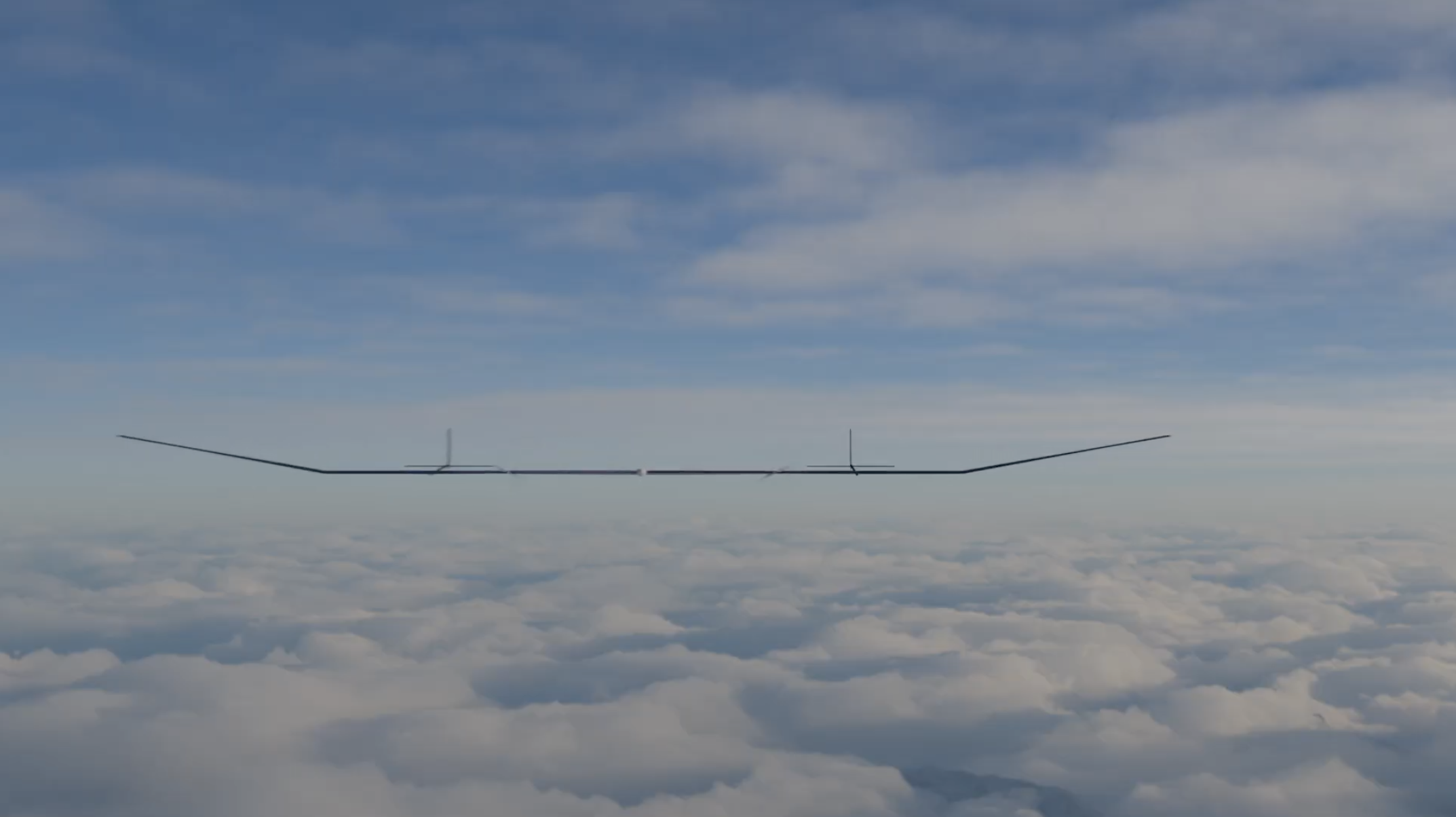The modern world is built on information
Modern society is increasingly defined by data - by how we observe, forecast, and communicate it. However, the tools available to us today force us to compromise: in what we can collect, in when we can access it, and in how we exchange it.
Whether you’re a defense analyst, a telecom operator, or a meteorologist, everything you do depends on how you see, sense, and communicate across the globe. With rapidly increasing data demands, the status quo doesn’t deliver.
From above - satellites:
- Launch on rockets, which are expensive ($10M-100M per launch) and inflexible (6-24 month lead time).
- Provide wide-area coverage or high resolution, but never both (and often neither).
- Move fast, whizzing by at 7 km/s, meaning they are over their target service area for just minutes per day, and revisits are costly.
- Are crippled by cloud coverage, high latency, and coverage gaps, which often result in blind spots over remote or contested areas.
From below - ground infrastructure:
- Offers small areas of coverage, limited visibility, and poor line of sight.
- Is slow to build and expensive to maintain; it can take years to put towers and backhaul lines in place, and they rarely end up in the exact locations they are needed.
- Is vulnerable to adversarial attacks, natural disasters, and even weather damage.
In between - aircraft, drones, and balloons:
- Aircraft have astronomical operating costs ($1,000/hr or more), and require human pilot operators: limiting practical endurance.
- Drones require in-person field deployments, cannot provide wide-area overviews, and can fly for only minutes.
- Balloons are unable to navigate exactly where they are needed, often requiring multiple flights to serve one area of interest.
The result - we operate with compromised information. Today:
- AI models are trained on outdated or low-resolution data. Predictions are inaccurate, placing decision-makers a step behind financial markets, military adversaries, or even the weather.
- Government and defense agencies cannot maintain persistent situational awareness or control distributed autonomous systems. They stitch together snapshots instead of streaming intelligence.
- Connectivity providers can’t economically serve rural, maritime, or growth markets without costly infrastructure or satellite services.
- Environmental monitors detect wildfires, floods, or methane leaks hours or days too late - or miss them entirely.
There has to be a better way.
Enter the StratoSat
At Radical, we are unlocking the sky as a new expanse to meet the world's rapidly growing information needs. To do this, we build autonomous StratoSats that provide persistent, high-performance infrastructure in the stratosphere.
Powered only by the sun, StratoSats fly continuously for months without landing. Free from orbital constraints, and robust to atmospheric winds, they can reposition in real time, land to upgrade payloads, and operate at a fraction of the cost of satellite or legacy high-altitude aircraft systems. StratoSats use AI and edge computing for real-time autonomous decision-making and data processing. They can be deployed by the hundreds; to create resilient mesh networks or deploy collaborative infrastructure services at scale.
Persistent access creates persistent value
Every major economic revolution began with exploration, but was defined by enduring mastery of a domain. The Agricultural Revolution standardized value creation from the land. Optimized shipping routes in the Age of Sail unlocked global trade. The Space Age birthed an era of non-terrestrial orbital services.
StratoSats are the next progression of this: autonomous robots, operated as a service, realizing the value creation opportunity of the stratosphere. Flying as a persistent airborne infrastructure layer, they address the needs of enormous, data-dependent markets across telecommunications, defense, insurance, agriculture, logistics, disaster response, and more.
By enabling operations in the stratosphere, Radical realizes:
- Lower CapEx and OpEx: A StratoSat can be built and operated for less than 1% of the lifetime cost of a comparable satellite constellation or legacy high-altitude aircraft system.
- Higher performance: Flying at 20km, rather than orbiting earth at 500km, StratoSats offer order of magnitude improvements in image resolution, communications bandwidth and latency, and the opportunity for video or continuous coverage over an area of interest.
- Flexible-deployment: StratoSats can loiter or navigate freely, being launched and recovered when needed - they are not constrained by orbital mechanics.
Scalability: Hundreds of StratoSats can be deployed to form intelligent, rapidly adapting constellations with coverage and revenue that scales linearly with fleet size.
In command of the sky
The stratosphere is the next great economic frontier for infrastructure. Persistent flight evolves the sky from a fleeting transit zone, into a persistent service platform.
Humanity’s story is one of revolutions in continuous value creation. We cultivated the land in the Agricultural Revolution, charted the seas in the Age of Sail, and in the Space Age, we reached out to the stars. Yet the sky has remained elusive - touched for moments, but never held. From ancient myths of old, through modern government-backed research programs, humanity has long dreamt of continuous flight. The time has come to realize it.
At Radical, our StratoSats aren’t simply cheaper satellites or bigger drones, they are the most resource-efficient, persistent infrastructure layer. Our mission is to provide humanity with enduring infrastructure in the sky, accelerating progress into the robotics age.

